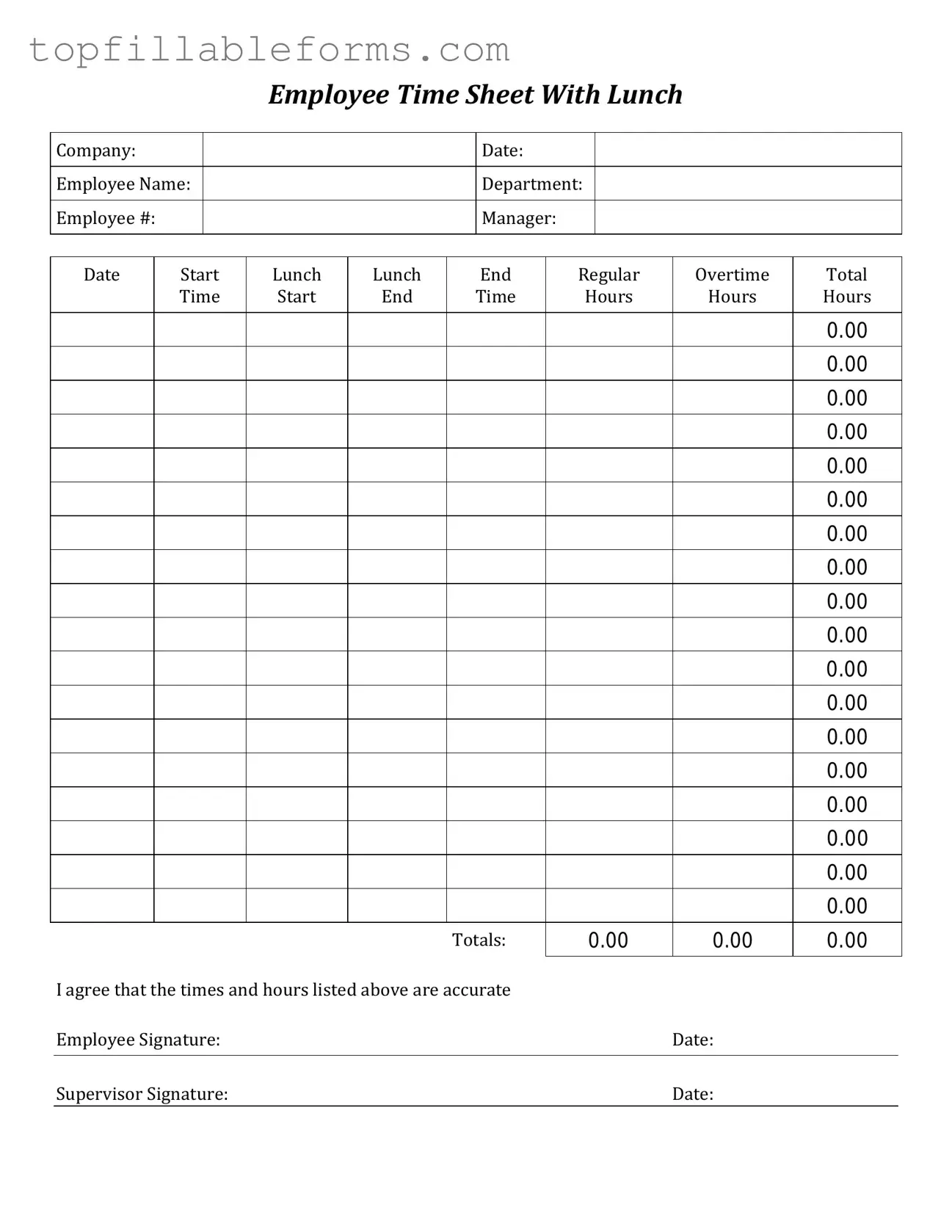Printable Time Card Form in PDF
The Time Card form is a crucial document used by employers to track the hours worked by employees during a specific pay period. This form typically includes details such as the employee's name, the dates worked, and the total hours logged. Properly completed time cards ensure accurate payroll processing and compliance with labor regulations.
Open Time Card Editor Here

